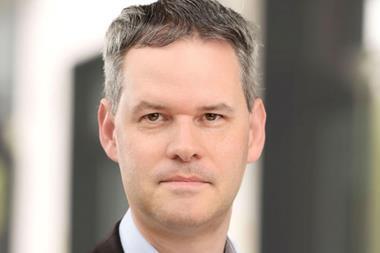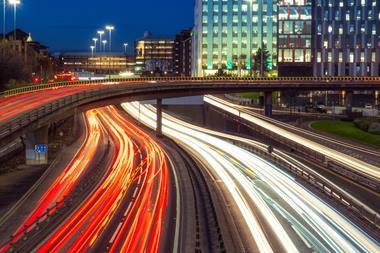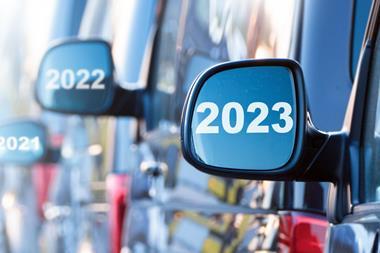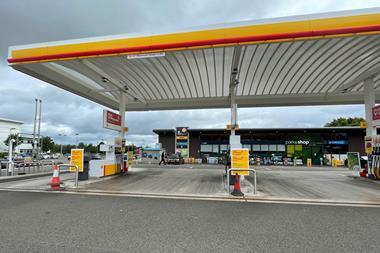Investment in shops across the continent should sometimes be treated with caution, and retailers could encourage more convenient channels of quick payment for fuel-only customers.
That’s the message from Datamonitor in its latest report: The Competitive Landscape in European Forecourt Convenience Retailing.
"As margins on fuel have dropped, there has been the attitude of people wanting to make money on a shop instead, but in reality there are a lot of customers who want a simple transaction and aren’t interested in picking up anything else," reports Datamonitor forecourts analyst, Anne Marie Davis.
"Customers are making use of the higher-investment forecourt sites, staff and facilities, but sometimes have to wait in shop queues when the only motivation for their visit is to buy petrol or diesel. This is potentially detrimental to these fuel-only customers who want to pay quickly, and forecourt operators need to strike a balance."
Retailers should think carefully about ploughing cash into a shop unless they’re confident that the supply chain and staff training is in place and that the investment is worth it in that particular area, says Davis. She adds: "You might think that by putting a fuel-only payment channel in that you’re preventing people from picking up impulse products in store, but pilot studies in other countries have shown that it doesn’t affect non-fuel sales overall."
Davis encourages forecourt retailers to consider offering customers an alternative to queuing up in the shop behind top-up shoppers with full baskets, such as by putting in pay-at-pump terminals or even having unmanned stations.
About half of all service stations in Europe now have a shop, and this figure rises to more than 70% in many markets, with the UK at 83%. Germany comes out top with 97%, with Italy trailing behind with only 20%. In Switzerland, Denmark and Sweden - which have particularly disparate populations - only about 34-49% of stations have shops, as many of their forecourts are automatic and unmanned.
Italy and the Czech Republic have the most fuel-only customers, while the French and Polish markets also have a lot of motorists who just want to buy fuel. At the other end of the scale, Sweden, The Netherlands and Switzerland have the greatest proportion of customers making non-fuel purchases at their petrol stations as there is a choice between basic, low-cost fuel stations and those where they can buy a wide range of products. The fact that shops perform well suggests that customers are driven to sites which best suit their needs, says Datamonitor.
Poland and Italy also have a low penetration of shops on their forecourts, however the shop offering is less developed in these markets, where forecourts in general are more abundant and the ’economy’ versus ’premium’ segments are less well defined than in the Nordic markets.
Davis warns that shop network expansion must be gradual in these markets: "As a less saturated shop market can lead to higher non-fuel sales per site, there is a strong case for expanding networks through low-cost unmanned sites, or at least through investment in automated payment facilities to cater for the demands of those fuel customers who simply want to fill up and go."
Across Europe the average number of visitors to forecourt shops making non-fuel purchases is just over five in every 10, while 46% of motorists refill their fuel tank and make no additional forecourt purchases. In the UK, an average of 36% of visitors to a forecourt with a shop don’t buy shop products, while 64% do buy something such as a sandwich or readymeal: "For some customers the sole purpose of the visit is to buy something from the shop. It is estimated that for certain sites in the UK as many as 25% of visitors make a shop purchase without buying fuel," says Davis.
The survey revealed that shop sales account for as much as 20% of total forecourt sales in some markets - such as Germany, which can rise to a staggering 60% at some German sites, while the figure in the UK is 11%.
Germany is the market which achieves the highest average sales per forecourt shop per annum due to the high number of shop visitors in absolute terms, says Datamonitor. Over the second half of 2005 and first half of 2006, it estimates that average sales per shop were about E958,000 annually, while it was E618,000 in the UK and E607,000 in the Netherlands.
Although a lot of innovation in the forecourt market comes from the US not Europe, Davis points to Germany as a country to watch. "Germany has done particularly well with its foodservice offer which is seen as similar quality to the high street, whereas it can be seen as sub-standard in the UK," she says. "The UK hasn’t totally shaken off its image of doing just hot pasties."
Datamonitor believes Germany is the exception to the rule and says: "Retailers in markets which are still developing their shop networks should exercise caution in their investments unless they can be confident of this level of success in the non-fuel side of the business."
However, the UK is pretty much ahead of the game with its professional offering at both supermarket and major oil company sites. Datamonitor points to forecourts owned by UK supermarkets Tesco and Morrisons, which have daily shop customer numbers far in excess of the oil company-branded stations. This performance is bolstered by the number of motorists they attract as evidenced by their average fuel sales per site, says Datamonitor, and this can be as much as three times the UK average. It’s obviously helped by the fact that the supermarkets next door drive traffic. Although the shops on the major oil company sites have lower daily visitor numbers ranging from 700 to 750, more than 60% of these customers are making non-fuel purchases, which is higher than the number buying non-fuel at the supermarket sites.
----
=== Patchwork effect ===
The number of ’green’ fuels in development could lead to a ’patchwork’ of different fuels across the EU, according to a report in The Guardian.
Writers Mark Milner and David Gow state that as pressure grows to promote greener motoring in the battle against climate change, different countries are turning to different fuels. Sweden, for instance, has made great strides with ethanol while other nations are turning to compressed natural gas (CNG) or liquefied petroleum gas, and many car makers are looking at hydrogen.
The article says that the alternative to a patchwork could be garages offering two blends of unleaded, two of diesel, biofuel, CNG, LPG plus a plug-in point to recharge electric cars. Milner and Gow say: "No fuel retailer is going to provide that array of pumps, with storage tanks, to satisfy every shape and size of fuel demand. Yet without an effective distribution network, no new fuel will catch on, however its green credentials."





























No comments yet